Abstract
The mortality rate and histopathological features of Nocardia asteroides and Nocardia brasiliensis infections in congenitally athymic (nude) mice of ICR and C3H/eB origins were quite different from what we found for Swiss white mice and other inbred mouse strains (namely, C57/BL/6J, New Zealand Black, BALB/c, CBA/LAC, and C3H/eB). The immunocompetent littermates of the congenitally athymic mice occupied an intermediate position between their athymic siblings and Swiss white mice in terms of their responses to both these organisms. Macrophage ingestion and destruction of N. brasiliensis, as demonstrated by electron microscopy, was found to occur. The T-lymphocyte appears to be an essential component in normal mouse resistance to infection by both N. asteroides and N. brasiliensis.
Full text
PDF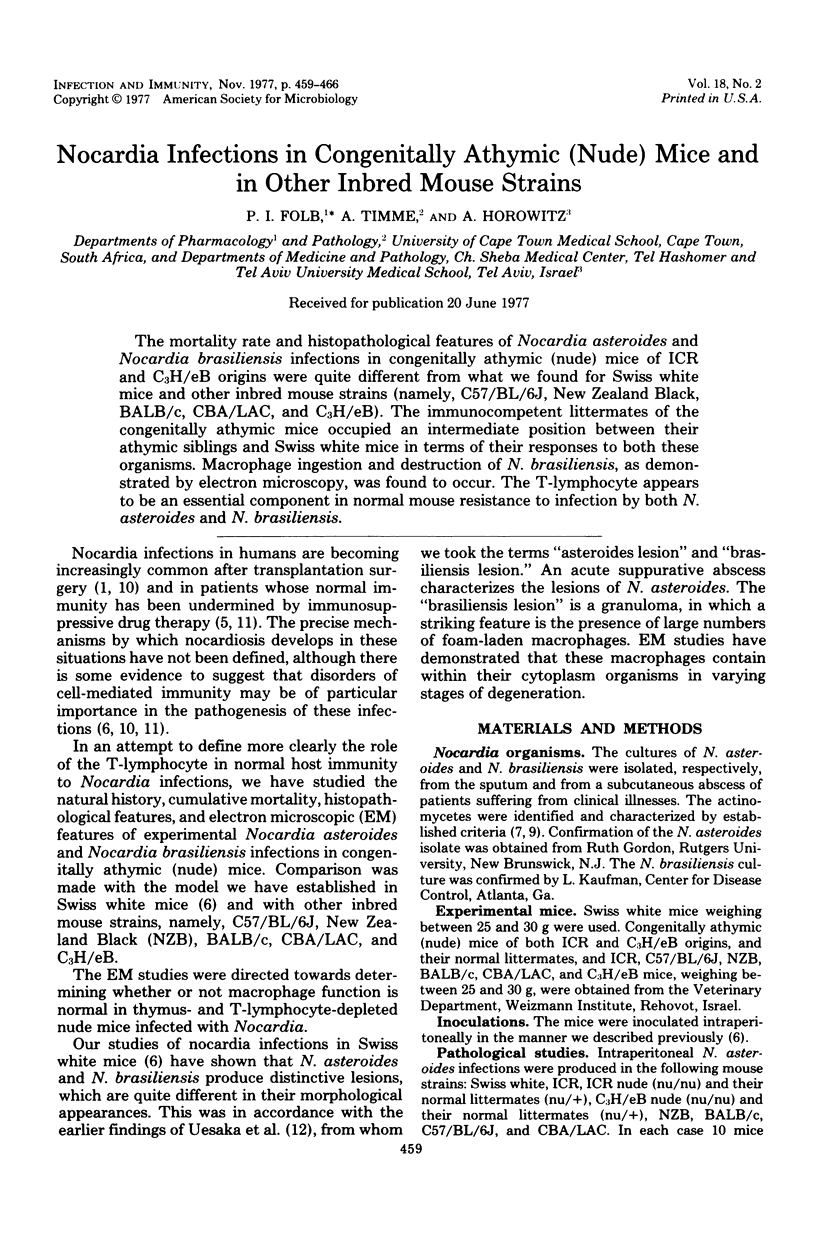
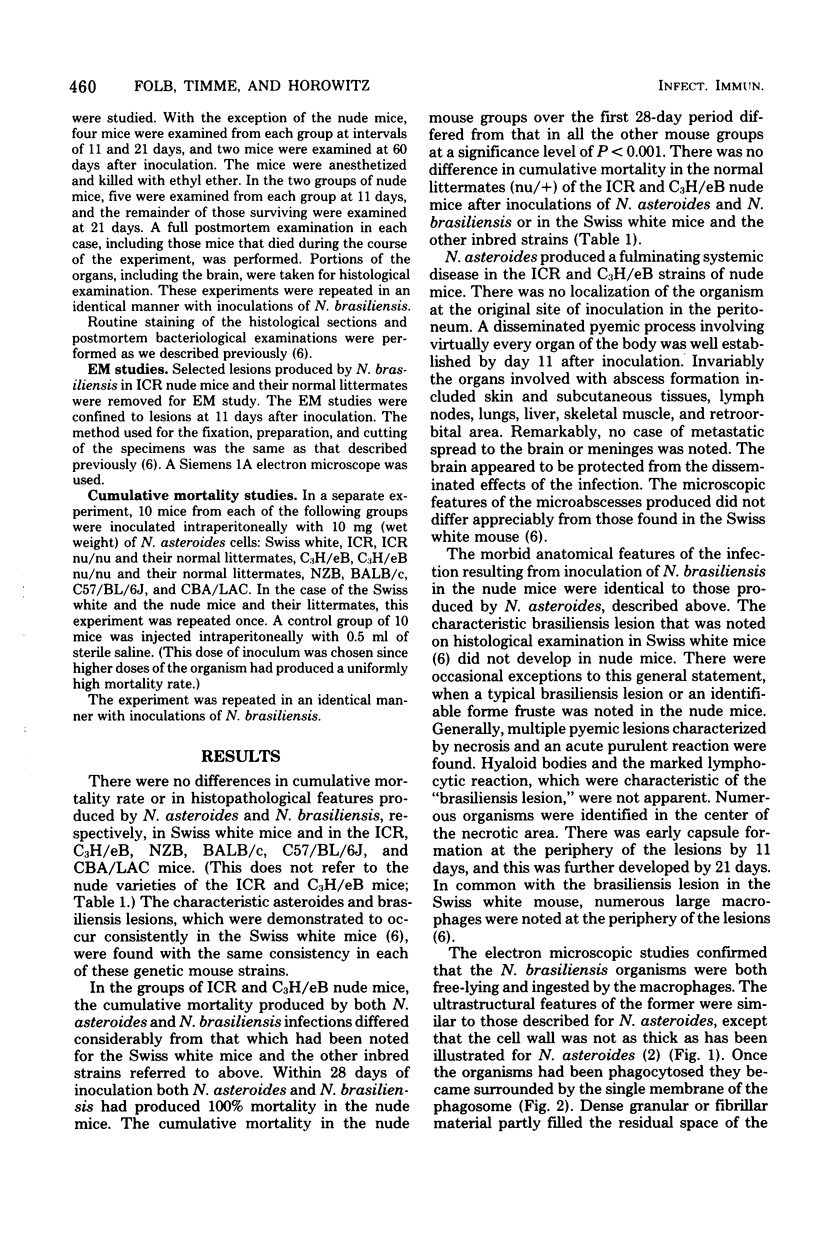
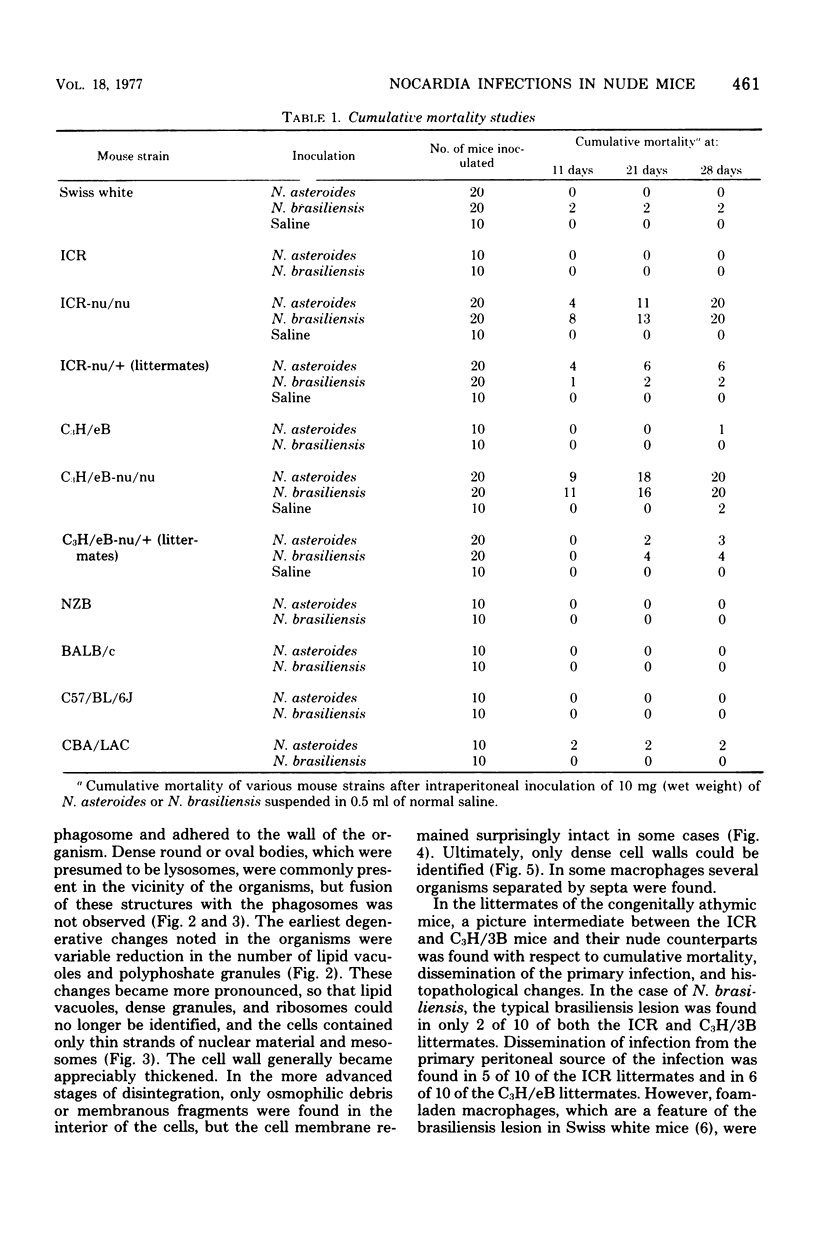
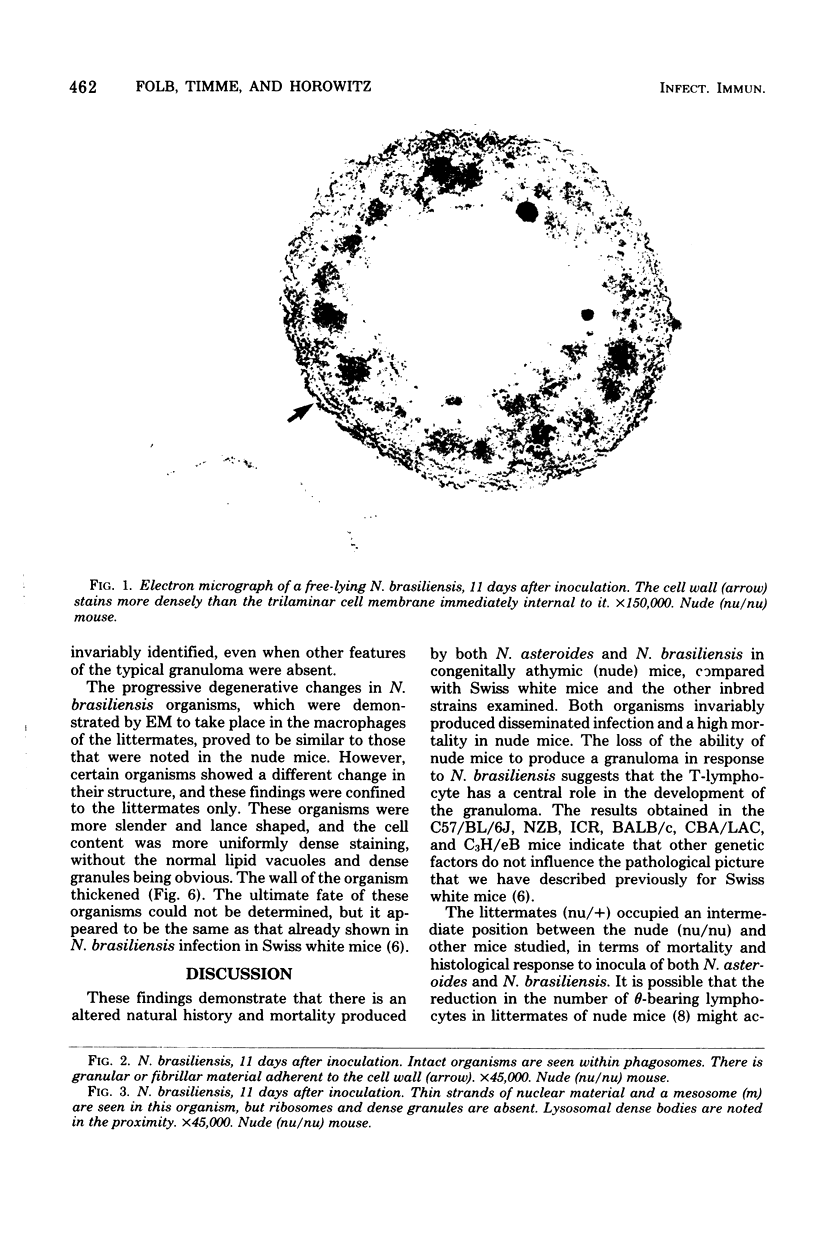
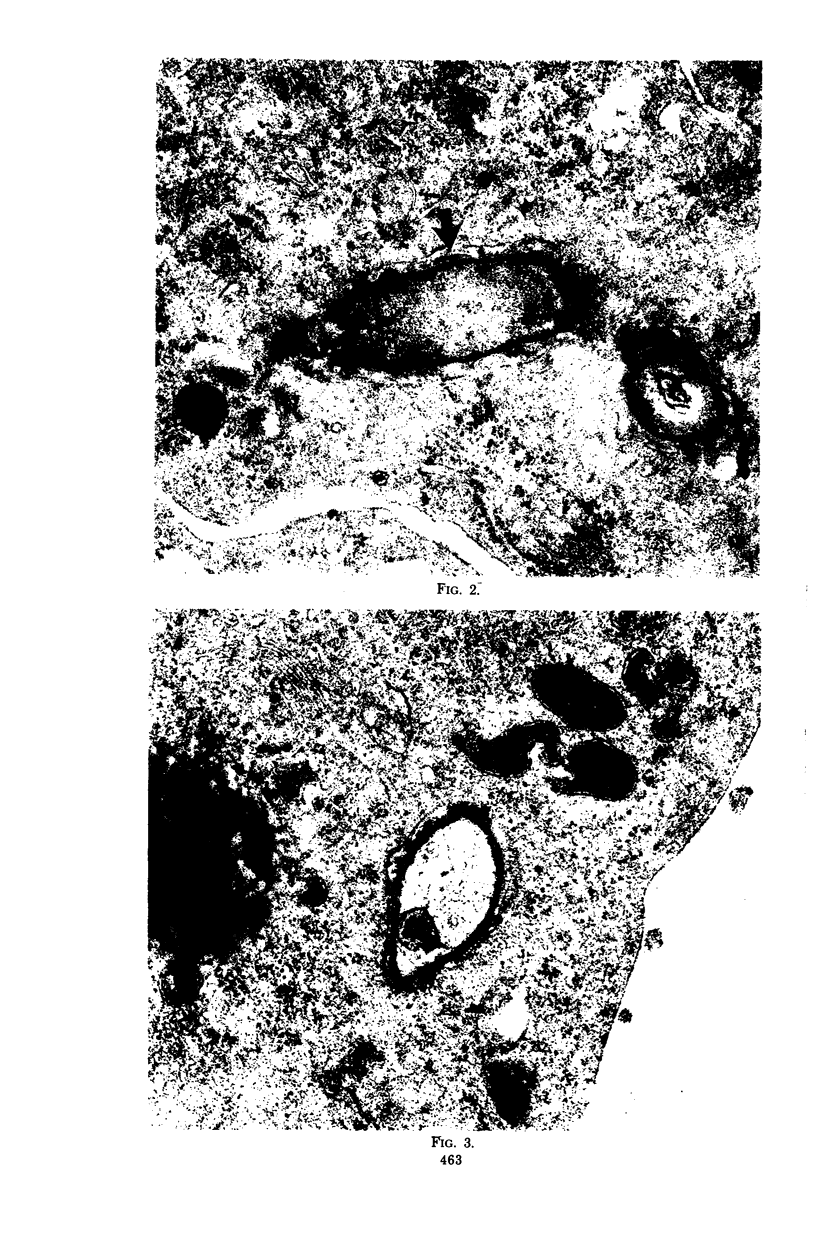
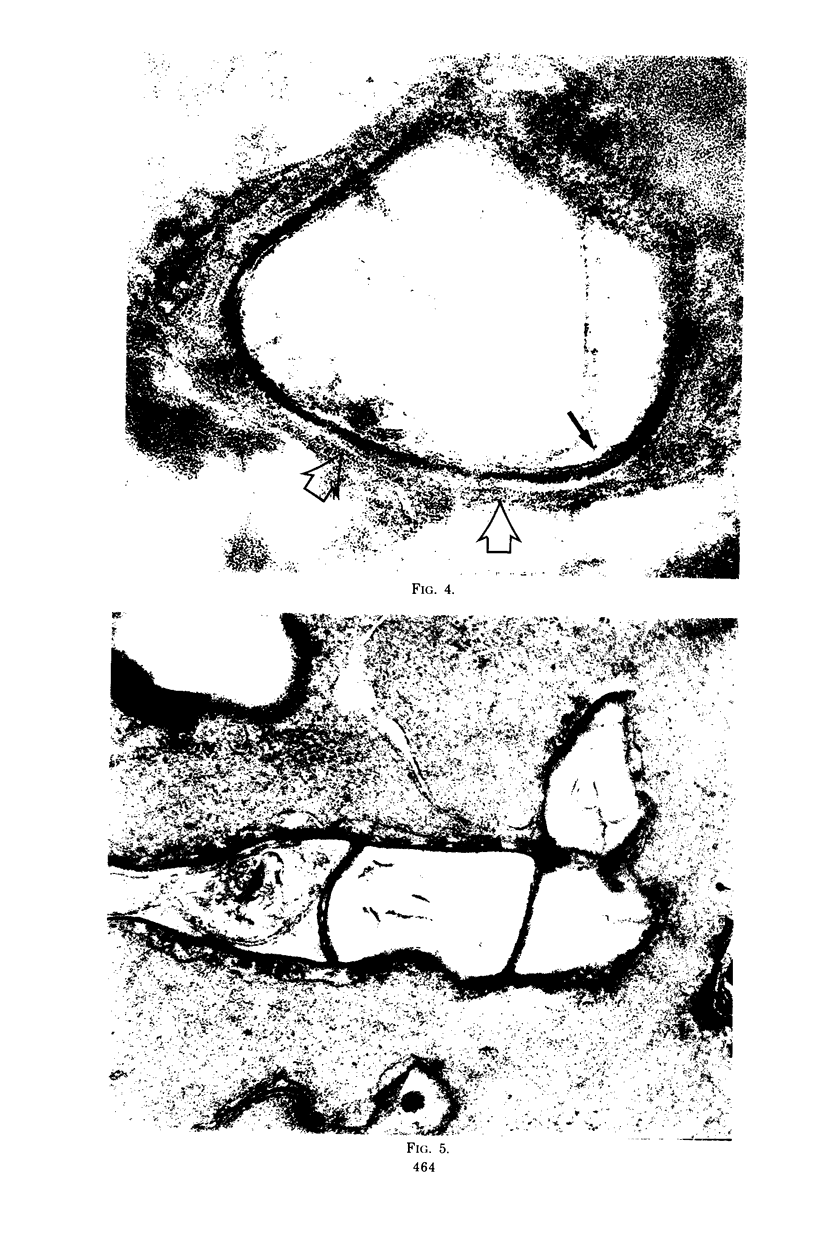
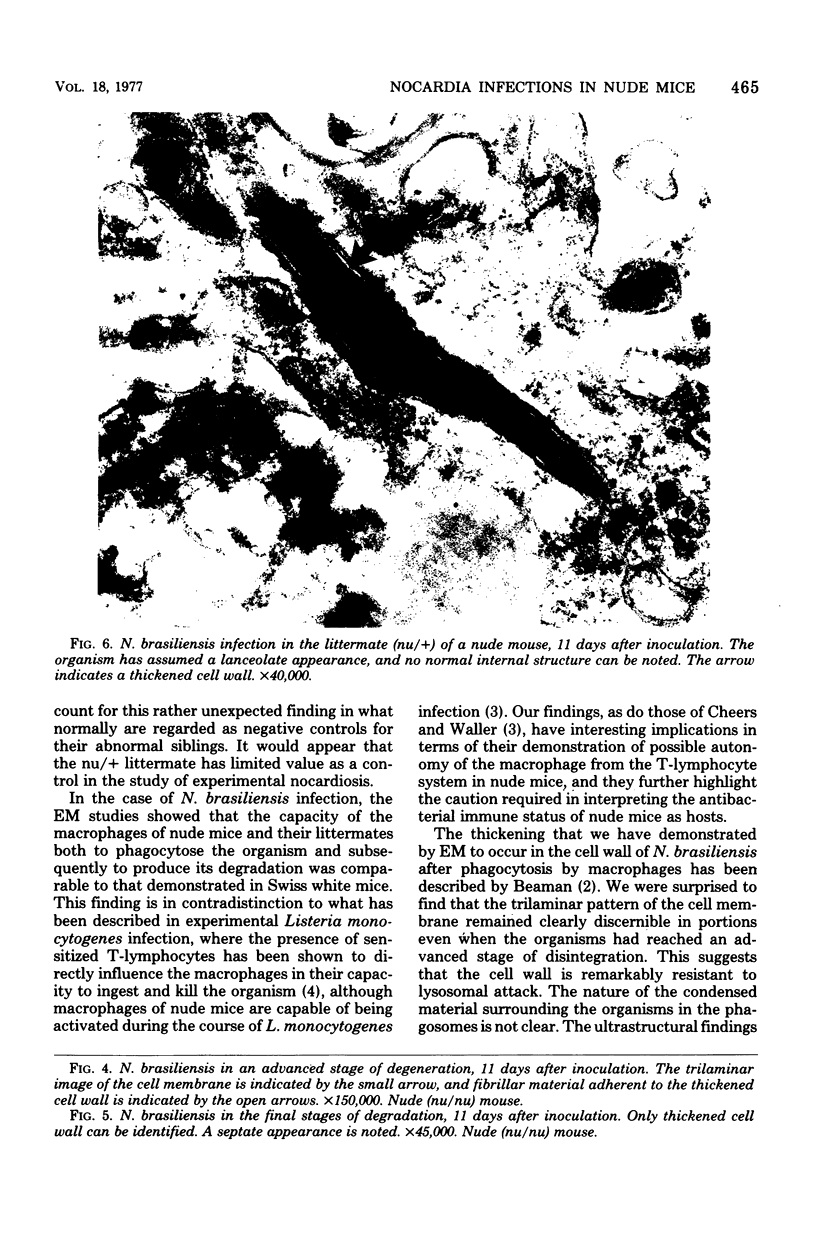
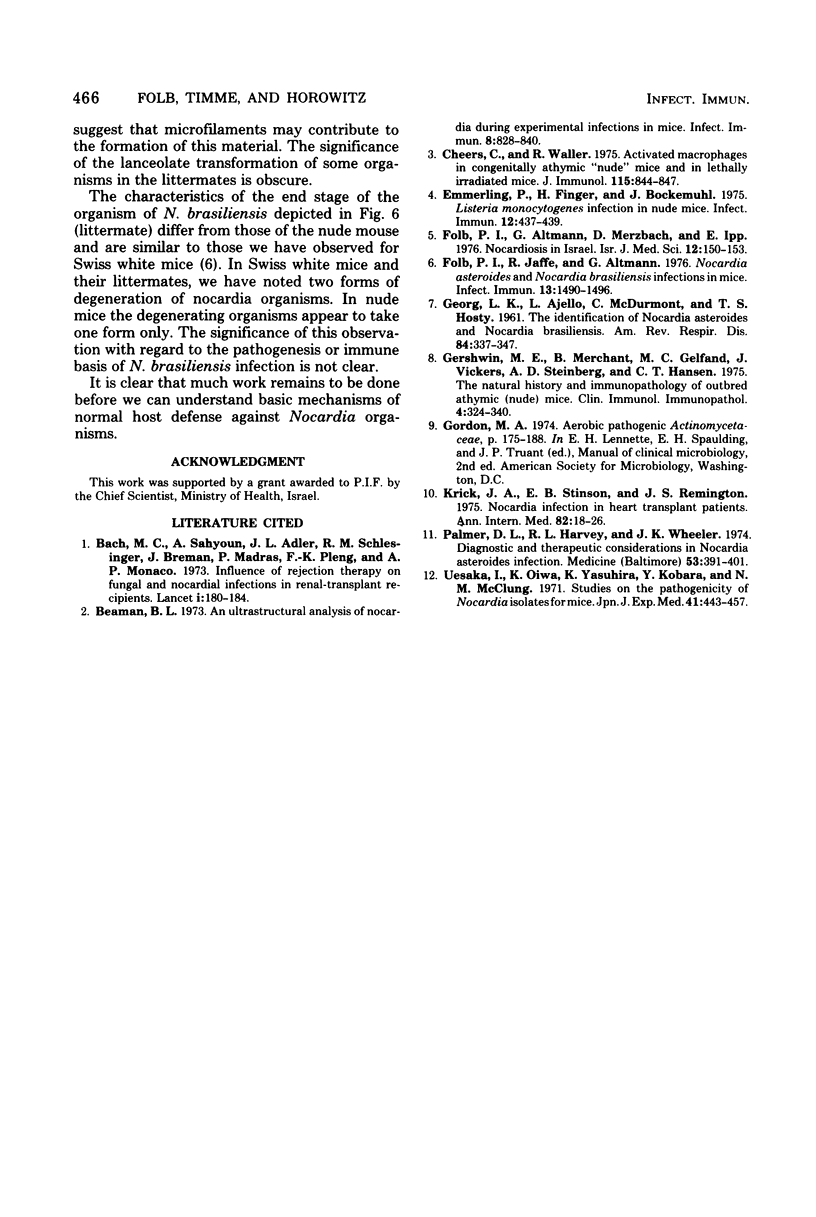
Images in this article
Selected References
These references are in PubMed. This may not be the complete list of references from this article.
- Bach M. C., Adler J. L., Breman J., P'eng F. K., Sahyoun A., Schlesinger R. M., Madras P., Monaco A. P. Influence of rejection therapy on fungal and nocardial infections in renal-transplant recipients. Lancet. 1973 Jan 27;1(7796):180–184. doi: 10.1016/s0140-6736(73)90007-x. [DOI] [PubMed] [Google Scholar]
- Beaman B. L. An ultrastructural analysis of Nocardia during experimental infections in mice. Infect Immun. 1973 Nov;8(5):828–840. doi: 10.1128/iai.8.5.828-840.1973. [DOI] [PMC free article] [PubMed] [Google Scholar]
- Cheers C., Waller R. Activated macrophages in congenitally athymic "nude mice" and in lethally irradiate mice. J Immunol. 1975 Sep;115(3):844–847. [PubMed] [Google Scholar]
- Emmerling P., Finger H., Bockemühl J. Listeria monocytogenes infection in nude mice. Infect Immun. 1975 Aug;12(2):437–439. doi: 10.1128/iai.12.2.437-439.1975. [DOI] [PMC free article] [PubMed] [Google Scholar]
- Folb P. I., Altmann G., Merzbach D., IPP E. Nocardiosis in Israel. A report of five cases. Isr J Med Sci. 1976 Feb;12(2):150–153. [PubMed] [Google Scholar]
- Folb P. I., Jaffe R., Altmann G. Nocardia asteroides and Nocardia brasiliensis infections in mice. Infect Immun. 1976 May;13(5):1490–1496. doi: 10.1128/iai.13.5.1490-1496.1976. [DOI] [PMC free article] [PubMed] [Google Scholar]
- GEORG L. K., AJELLO L., McDURMONT C., HOSTY T. S. The identification of Nocardia asteroides and Nocardia brasiliensis. Am Rev Respir Dis. 1961 Sep;84:337–347. doi: 10.1164/arrd.1961.84.3.337. [DOI] [PubMed] [Google Scholar]
- Gershwin M. E., Merchant B., Gelfand M. C., Vickers J., Steinberg A. D., Hansen C. T. The natural history and immunopathology of outbred athymic (nude) mice. Clin Immunol Immunopathol. 1975 Sep;4(3):324–340. doi: 10.1016/0090-1229(75)90002-1. [DOI] [PubMed] [Google Scholar]
- Krick J. A., Stinson E. B., Remington J. S. Nocardia infection in heart transplant patients. Ann Intern Med. 1975 Jan;82(1):18–26. doi: 10.7326/0003-4819-82-1-18. [DOI] [PubMed] [Google Scholar]
- Palmer D. L., Harvey R. L., Wheeler J. K. Diagnostic and therapeutic considerations in Nocardia asteroides infection. Medicine (Baltimore) 1974 Sep;53(5):391–401. doi: 10.1097/00005792-197409000-00005. [DOI] [PubMed] [Google Scholar]
- Uesaka I., Oiwa K., Yasuhira K., Kobara Y., McClung N. M. Studies on the pathogenicity of Nocardia isolates for mice. Jpn J Exp Med. 1971 Oct;41(5):443–457. [PubMed] [Google Scholar]








